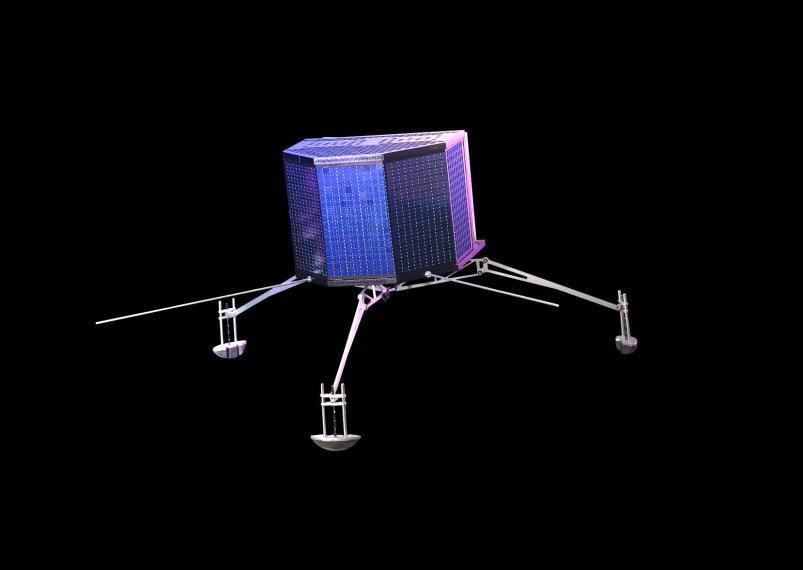DARMSTADT, Germany (AP) — Hundreds of millions of miles from Earth, a speeding European spacecraft released a lander toward the icy, dusty surface of a comet on Wednesday, setting off a seven-hour countdown to an audacious attempt to answer some of the biggest questions about the origin of the universe.
A landing would cap a 6.4 billion-kilometer (4 billion-mile) journey by the European Space Agency’s Rosettaspacecraft, launched a decade ago to study the 4-kilometer-wide (2.5-mile-wide) 67P/Churyumov-Gerasimenkocomet. If successful, the Philae lander would be the first spacecraft to land on a comet.
“It’s on its own now,” said Stephan Ulamec, Philae Lander Manager at the DLR German Aerospace Center.
Due to the vast distances involved and the time delays in receiving data, confirmation of a landing should reach Earth about 1603 GMT (11:03 a.m. EST).
Watch live below:
Mission controllers clapped and embraced at mission control in Darmstadt as they got confirmation that the unmanned Rosetta, speeding through space in tandem with the comet at 41,000 mph (66,000 kph), had successfully released the 220-pound (100-kilogram), washing machine-sized Philae lander.
“Philae has gone. It’s on its path down to the comet,” Rosetta flight director Andrea Accomazzo said. “We are all glad that it worked flawlessly in the past minutes.”
Philae was supposed to drift down to the comet and latch on using harpoons and ice screws. ESA announced hours before the release that a third component — an active descent system that uses thrust to prevent the craft from bouncing off the surface of the low-gravity comet — could not be activated. It wasn’t clear how big of a setback that was.
“We’ll need some luck not to land on a boulder or a steep slope,” Ulamec said.
During the descent, scientists are powerless to do anything but watch, because the vast distance to Earth — 500 million kilometers (311 million miles) — makes it impossible to send instructions in real time. It takes more than 28 minutes for a command to reach Rosetta.
About two hours after the separation from Rosetta was confirmed, scientists re-established contact with the lander.
“Now we can follow it on its descent,” said Paolo Ferri, head of mission operations at ESA.
Rosetta, which was launched in 2004, had to slingshot three times around Earth and once around Mars before it could work up enough speed to chase down the comet, which it reached in August. Rosetta and the comet have been traveling in tandem since then.
If the lander’s mission is successful, Rosetta and Philae plan to accompany the comet as it hurtles toward the sun and becomes increasingly active in the rising temperatures. Using 21 different instruments, the twin spacecraft will collect data that scientists hope will help explain the origins of comets and other celestial bodies.
The European Space Agency says even if Philae’s landing doesn’t succeed, the 1.3 billion-euro ($1.6 billion) mission won’t be a failure. Rosetta will be able to perform about 80 percent of the scientific mission on its own.
___
Online:
http://new.livestream.com/ESA/cometlanding
___
Follow Frank Jordans on Twitter at http://www.twitter.com/wirereporter
Copyright 2014 The Associated Press. All rights reserved. This material may not be published, broadcast, rewritten or redistributed.







